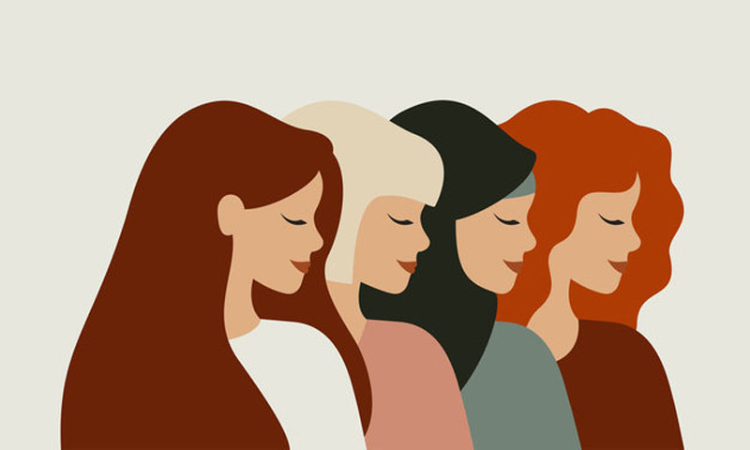From Policies To Practice: Women In India Redefine Roles And Drive National Progress
Sahil Dhingra
10 July 2024 2:09 PM IST

“The day will come when man will recognize woman as his peer, not only at the fireside but in councils of the nations. Then and not until then, will there be the perfect comradeship, the ideal union between sexes that shall result in the highest development of the race.” – Susan B. Anthony
From caregivers to leadership positions, women in India are challenging traditional gender roles, echoing the global movement to redefine societal expectations. India, with the aim to become the third-largest economy by 2030, necessitating active female participation in the workforce, constituting over 48.56 percent of the population but their workforce participation is only 27.8 percent , highlighting the deep-rooted patriarchal, cultural, and economic factors hindering women's career and India's progression. Despite India's economic growth and increased education levels, women continue to be largely excluded from the workforce, primarily due to the disproportionate burden of unpaid care work. Women in India spend significantly more time on unpaid tasks like household chores and caregiving compared to men. On an average, Indian woman aged between 15 and 29 spends around 5.5 hours doing unpaid labor in a day compared to a man who only spends about 50 minutes. Thus, the rise in number of women exiting from paid work over the last decade, explaining the 2-point tumble to 129th rank out of 146 countries in the annual World Economic Forum (WEF) Gender Gap ranking, 2024. Shockingly, this value of unpaid labor of women across rural and urban areas contributing to over 22 trillion Indian rupees to the economy in 2019.
There have been strides in women's representation across various sectors. In terms of economy, over 20% of MSMEs in India are owned by women . This is despite a decrease in the funding share; women entrepreneurs have been given an opportunity through the startup ecosystem. Also, women's participation in senior roles has increased with rural self-help groups turning into profitable enterprises as a result of good policies being put in place. Politically, the Women's Reservation Bill of 2023 aims at ensuring that there are minimum female members constituting 33% of the total seats available for both the legislative assemblies and the Parliament. It is a positive move towards achieving equal gender representation. However, its real impact still remains to be seen due to it's delayed implementation which is contingent on the completion of the next population census and constituency delimitation, expected around the 2029 national elections.
The appointment of Justice B.V. Nagarathna going to be the first woman Chief Justice of India in 2027 will be a historic milestone. However, her term will be notably short, only 36 days,aising questions about whether this brevity is politically driven so that it does not have much impact on female leadership. This situation highlights the ongoing struggle within the so-called "old boys' club," where systemic biases and power dynamics continue to hinder women's advancement.
India's journey towards gender equality is juxtaposed with global realities. Gender equality remains a mirage in the world despite some progress with some nations retrogressing. Sudan, Yemen, Afghanistan and Chad have huge gender disparities which range from forced marriages to limited rights and protections for women.
Gender inequality persists through misogyny which has historical and religious roots. Feminism is a movement that seeks to achieve equality through generations of activism. From suffrage to reproductive rights and intersectionality, each wave addresses distinctly various aspects of gender discrimination. However, no country has reached parity yet; however among top nine countries namely Iceland, Norway, Finland, New Zealand, Sweden, Germany, Nicaragua, Namibia and Lithuania closed at least 80% of the gap. India's recent strides towards gender equality are reflected on her policies and initiatives. Yojanas such as Beti Bachao Beti Padhao, Pradhan Mantri Matru Vandana Yojana and Mahila Shakti Kendra seek to empower women from all walks of life. That said, doubts remain about their actual effect on women's lives, necessitating critical analysis that can bridge the gap between policy intentions and outcomes in real-life situations.
India has made bold moves towards eliminating gender imbalances through various policies and initiatives that focus on empowering women across sectors like politics, education, health, economic participation and opportunity. Nonetheless, this transition from making a policy to seeing it being implemented effectively at the grassroots is still problematic today; there are numerous barriers blocking full realization of the rights and opportunities of women. While there have been positive impacts of certain policies on specific areas, enduring challenges like socio-economic gaps, cultural norms and gender biases still undermine attempts towards achieving gender parity.
Nevertheless, effective implementation of policies towards gender just society requires concerted efforts from policymakers, civil society, and other stakeholders to overcome systemic barriers and create an inclusive society where women can thrive and contribute to the nation's development. Through collaborative action and targeted interventions, India can pave the way for a more equitable future where every woman has the opportunity to fulfill her potential and participate fully in all aspects of life.
Author: Sahil Dhingra, Student at KIIT School of Law, Kalinga Institute of Industrial Technology, Bhubaneshwar. Views are personal.


